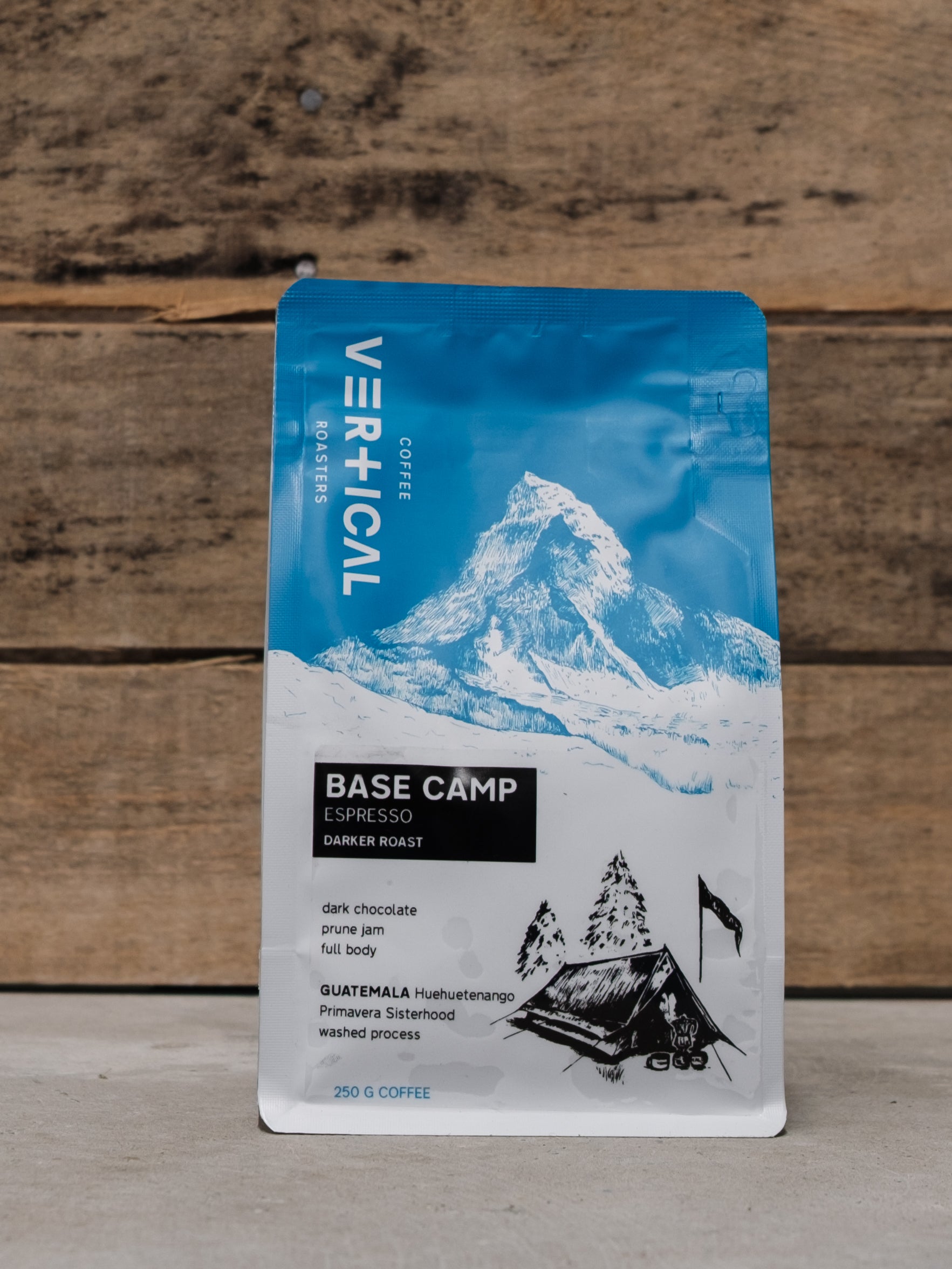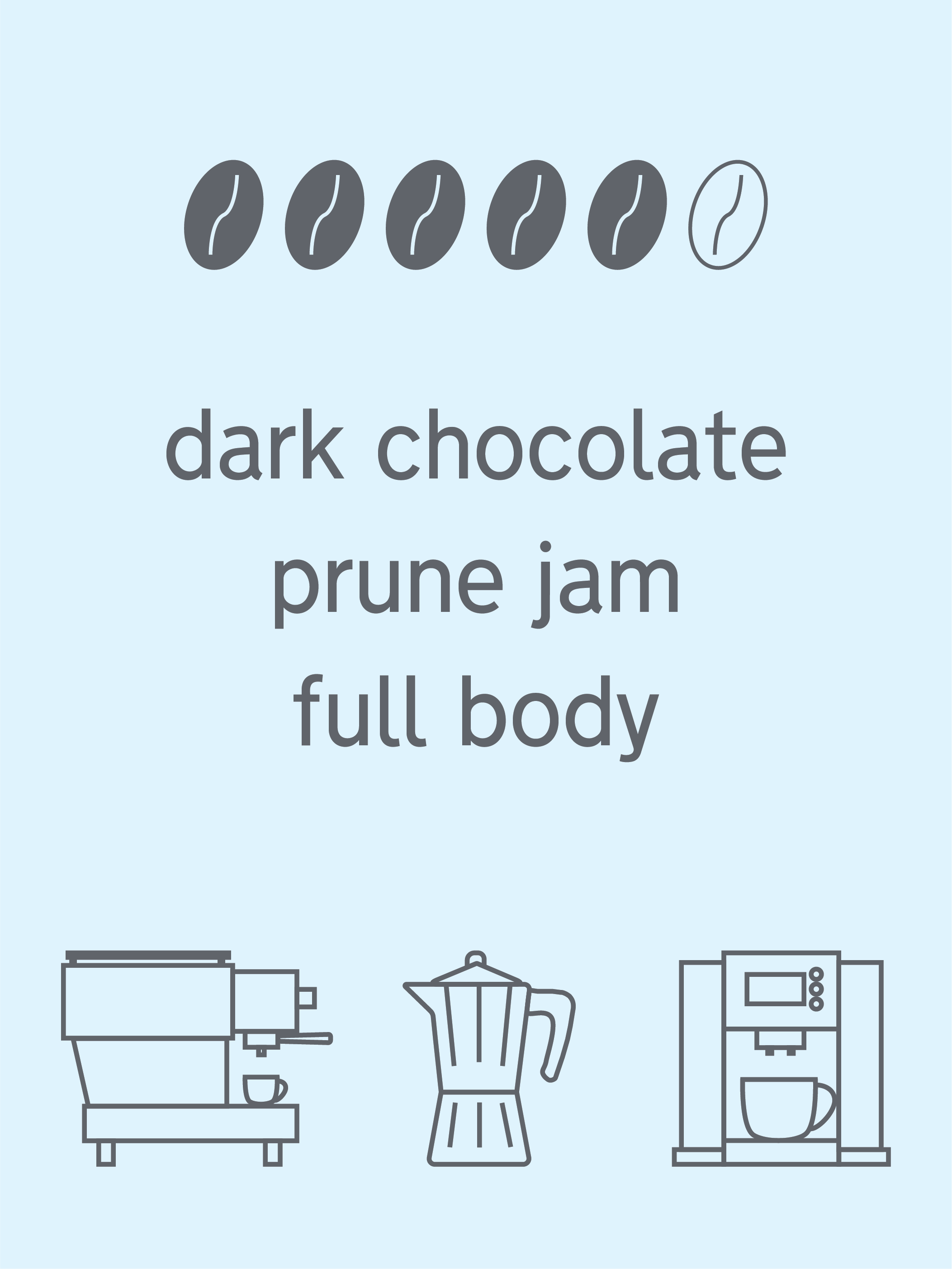





our preferred extraction
for a double shot, aim for 19 g in / 40 g out in 25 seconds with water temperature at 93 °C and adjust from there to meet your taste
More about this coffee
This is the darkest roast in our portfolio. It's for everyone who likes a more developed, full bodied and intense espresso with those dark chocolate flavour notes balanced by enough sweetness (think sticky prune jam) to give you a long lasting, lingering aftertaste.
Base Camp Espresso is your happy place: where you make plans for future adventures over a flat white, where you down that boosting espresso for an extra caffeine kick before heading out, where you fire up the camping-stove and brew a simple Bialetti to enjoy with your friends while sharing some good stories.
The beans for this coffee will be changing over the seasons and right now we're using a regional blend from Huehuetenango, Guatemala produced by women smallholder farmers with full traceability to farm level.
If you'd like to know more, read on below.
Origin: San Antonio Huista, Huehuetenango, Guatemala
Producer: women smallholder farmers of the region
Varietals: Caturra, Catuaí
Altitude: 1650 masl
Processing: fully washed
Sourced through Primavera Green Coffee
Gender equity is a longstanding challenge for the coffee industry; women coffee growers have less access to land, credit, training, and basic education even as women make key contributions to plant care, harvest, and processing coffee. Research has shown that when women are empowered to make decisions, including financial decisions about their coffee farms, families and community are more successful and their needs are better met. Extra funds for this coffee go to putting on workshops for women producers.
Coffee production and export has always been an important part of Guatemalan economy and the way of life. It is estimated that there are over 125'000 coffee producers and Guatemala is the eight biggest exporter of coffee in the world. Coffee is one of the most important agricultural exported goods in Guatemala taking up to 40% of the arable land.
Huehuetenango (or "Huehue") is very remote and the roads in the region can be difficult; before flights from the city, reaching farms in this area used to take 8-10 hours of bumpy driving in the high mountains. But the altitude of this region, combined with the hot dry winds that blow over from Mexico’s Tehuantepec Plain, create excellent conditions for quality coffee here. Because of the altitudes and remoteness of the region, most farmers process their coffee at home rather than at a central wet mill.
Over the years, Primavera Coffee with Nadine Rasch at the helm (a fourth generation coffee grower herself), has gained experience and knowledge about the area, farming practices and post-harvest processing, which has enabled them to empower and support the local farmers through trade and an agronomy program. They have become well known in the area, making a point to work with the new generation to create a more sustainable coffee industry in Huehue. Huehuetenango is known for beans with an intense and pleasant acidity, full body and delightful wine, floral and fruity notes.
